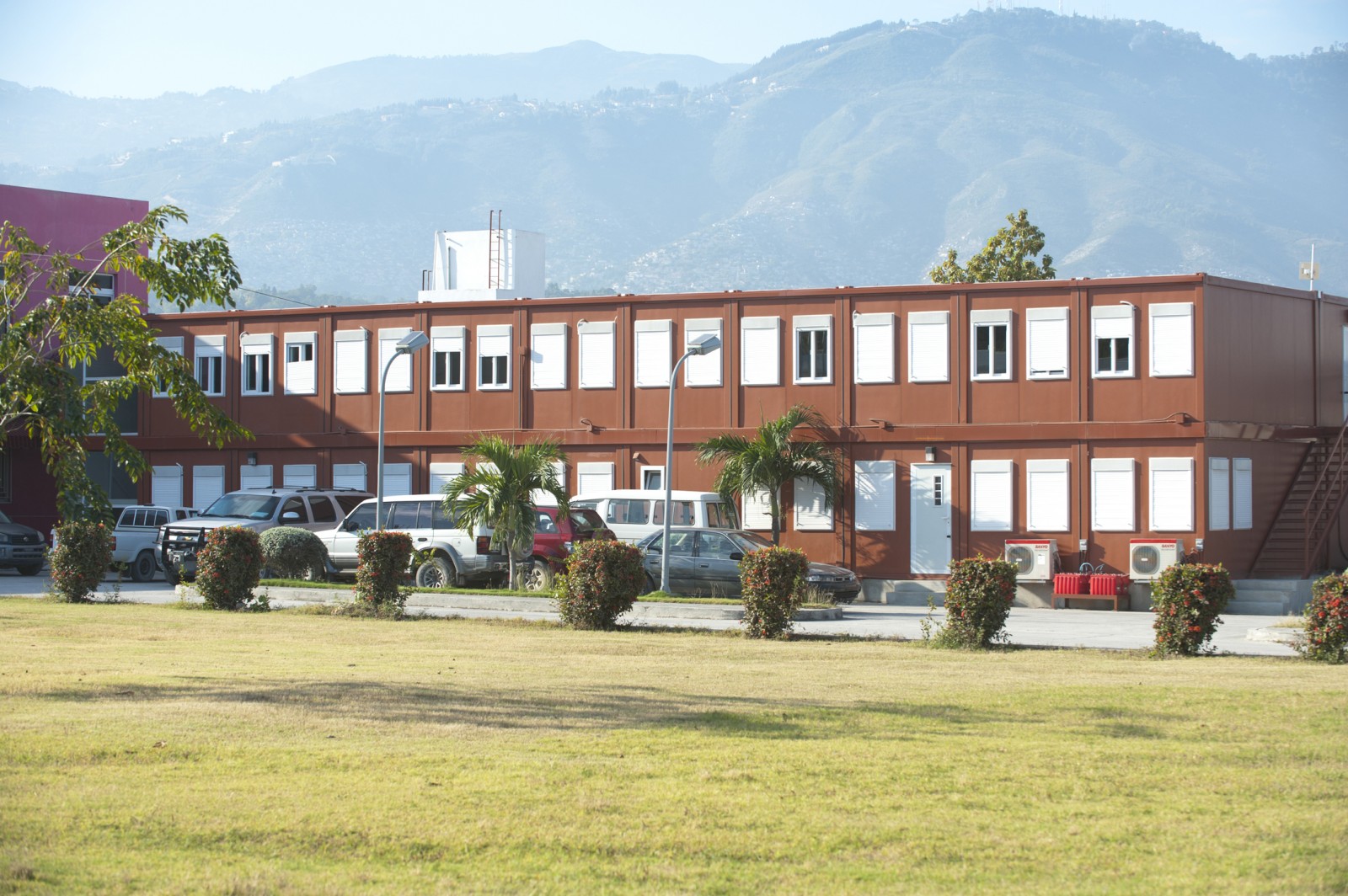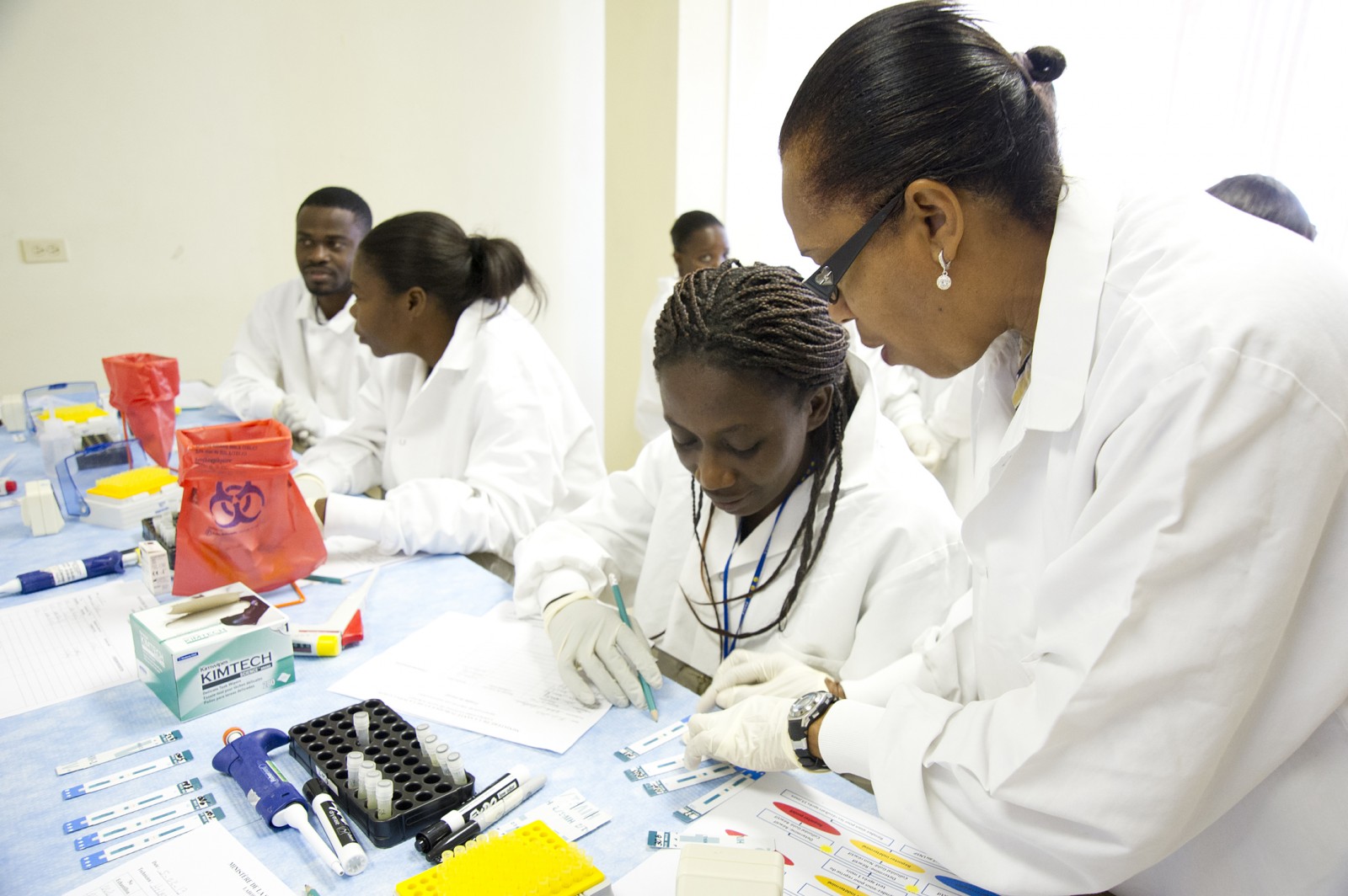You are here
Reporting on Public Health Progress in Haiti
 Just over a year ago, I traveled to Haiti with the CDC Foundation to commemorate the completion of two new public health buildings supported through donations to the CDC Foundation, the central office of the Ministry of Public Health and Population (MSPP) and the headquarters of the Division of Epidemiology, Laboratory and Research (DELR). Both buildings marked a milestone in the country’s recovery and reconstruction since the earthquake.
Just over a year ago, I traveled to Haiti with the CDC Foundation to commemorate the completion of two new public health buildings supported through donations to the CDC Foundation, the central office of the Ministry of Public Health and Population (MSPP) and the headquarters of the Division of Epidemiology, Laboratory and Research (DELR). Both buildings marked a milestone in the country’s recovery and reconstruction since the earthquake.
Since that visit, Haiti’s health minister has moved into her new office and phase one of the new ministry compound, with space for roughly 250 employees, is operational. No longer having to work out of makeshift facilities, the minister and her staff are able to build on the important ongoing task of strengthening the country’s public health infrastructure. Phase two building on land adjacent to the new compound is being planned for implementation in 2015.
Meanwhile, the DELR building has been providing the space necessary to Field Epidemiology Training Program (FETP) residents. In 2013, the residents conducted 15 outbreak investigations related to a range of public health events, including cholera, diphtheria, measles, food poisoning and rabies. They have evaluated eight surveillance systems. They have also conducted and assisted with investigating high blood pressure rates; coverage surveys for the oral cholera vaccine and evaluations of knowledge, attitudes and practices related to rabies and sexually transmitted infections. Fifteen graduates have mentored the basic and current intermediate trainees; four graduates from the intermediate and advance level have been participating as presenters at the training sessions; and seven have been helping with the training activities. After graduating from the program, five FETP graduates were moved to higher positions within the health ministry.
The DELR has accomplished much in the last year, with supportive leadership, increased information sharing, field coordination and the Centers for Disease Control and Prevention (CDC) technical support. Some of the DELR’s work has been made possible because it has the luxury of space. With support from CDC, DELR has doubled staffing levels. Since the building’s move-in date (late 2012), 28 additional surveillance sites have been added to the national surveillance system. That’s 115 sites throughout the country. The information collected is reviewed every week at Situation Room meetings hosted by the DELR. With the help of additional surveillance officers supported by CDC, DELR can detect cases of disease at the institutional level, and can mount timely outbreak investigations.
 The proximity of DELR and LNSP staff has facilitated establishment of PRESEpi, a sentinel laboratory surveillance system. Robust meningitis and rotavirus surveillance through this system will help estimate the impact and effectiveness of rotavirus and pneumococcal vaccines when they are introduced in Haiti in 2014.
The proximity of DELR and LNSP staff has facilitated establishment of PRESEpi, a sentinel laboratory surveillance system. Robust meningitis and rotavirus surveillance through this system will help estimate the impact and effectiveness of rotavirus and pneumococcal vaccines when they are introduced in Haiti in 2014.
Finally, the new building is vital for larger scale coordination. Numerous training sessions have been held in the building and CDC, LNSP and DELR staff conduct weekly meetings there to share and review data. This collaboration is vital to effectively dealing with current health concerns and is a key aspect in ensuring Haiti’s readiness to detect and respond to new health threats as they arise. Of course, Haiti’s public health progress goes beyond the buildings. Overall, CDC’s multidisciplinary team of epidemiologists, microbiologists, ecologists and public health advisors in the field continue to work alongside Haiti’s ministry staff to provide training and develop an integrated disease surveillance system, creating a global network that has been critical in Haiti’s progress in public health.
View more information on this progress provided by CDC staff in Haiti.
